
FOI 23/24-1405
DOCUMENT 1
OFFICIAL
SGP Knowledge Article Template
For Internal Use Only
The contents of this document are OFFICIAL.
Understand disability requirements
This article provides guidance for a local area coordinator, early childhood coordinator
and al NDIA staff (planner, payment officer, internal review officer, complaints officer,
participant service officer, access officer, quality officer, technical advisor, SDA officer,
NCC officer, provider support officer) to:
understand disability requirements
know how to weigh evidence against requirements.
Recent updates
July 2023
New article adapted from other access decision articles to optimise knowledge resources.
Before you start
You have:
read and understood Our Guideline – Applying to the NDIS, in section Do you meet
the disability requirements?
read article What evidence of disability is required?
Disability requirements
What are the disability requirements?
A person will meet the disability requirements if:
their disability is caused by an impairment
their impairment is likely to be permanent
their permanent impairment significantly reduces their functional capacity to move
around, communicate, socialise or learn, or undertaking self-care or self-
management tasks.
V1.0 2023-07-10
Understand disability requirements
Page 1 of 3
This document is uncontrolled when printed
OFFICIAL
Page 1 of 12

FOI 23/24-1405
OFFICIAL
SGP Knowledge Article Template
For Internal Use Only
their permanent impairment affects their ability to work, study or take part in social
life
they’l likely need support from the NDIS for their whole life.
We’l likely decide a person diagnosed with a List A condition wil meet the disability
requirements if they give us evidence of the diagnosis.
Note: There are also different requirements for:
children younger than 6 with developmental delay. Go to article Check evidence for
a decision – developmental delay.
people aged between 0 and 25 with a hearing impairment. Go to article Check
evidence for a decision – hearing loss 0-25 years of age.
Consider these articles when you check evidence for a decision:
Check evidence for a decision – List A condition
Check evidence for a decision – impairment caused disability
Check evidence for a decision – disability requirements – likely permanence
Check evidence for a decision – significant functional impact
Check evidence for a decision – disability requirements – social and economic
impact
Determine lifetime support eligibility.
How to weigh evidence against the requirements
For applicants who do not have a List A condition, they must have a range of evidence from
their treating health professionals.
When you weigh the relevance and importance of the provided disability evidence, consider:
who is providing the evidence of disability?
how old is the evidence of disability (particularly relevant for functional capacity
evidence)?
Next steps
To action an access decision case, go to articles:
V1.0 2023-07-10
Understand disability requirements
Page 2 of 3
This document is uncontrolled when printed
OFFICIAL
Page 2 of 12

FOI 23/24-1405
OFFICIAL
SGP Knowledge Article Template
For Internal Use Only
Make an access decision
Check evidence for a decision – age and residence requirements
Version control
Version Amended
Brief Description of Change
Status
Date
by
0.1
JJO192
New article split from ‘Check evidence for a
DRAFT
2023-06-28
decision – impairment caused disability
0.2
TER030 Peer review
DRAFT
2023-06-28
0.3
JJO192
Actioned peer review
DRAFT
2023-06-28
0.4
JJO192
Action VT review. Maintained language for
DRAFT
2023-06-28
consistent guidance.
Flesch Readability 36
Grade 9.6
Passive voice 7.02%
0.5
VFK746 EL1 review of EL2 feedback implementation
DRAFT
2023-07-03
0.6
VFK746 EL1 actioning of EL2 feedback – submit for
DRAFT
2023-07-04
SD and Partner review
0.7
VFK746 EL1 actioning of SME feedback
DRAFT
2023-07-07
1.0
EMN960 EL2 approval to publish
APPROVED
2023-07-07
V1.0 2023-07-10
Understand disability requirements
Page 3 of 3
This document is uncontrolled when printed
OFFICIAL
Page 3 of 12
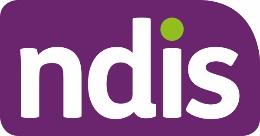
FOI 23/24-1405
DOCUMENT 2
OFFICIAL
Knowledge Article
For Internal Use Only
The contents of this document are OFFICIAL.
Add a new primary disability
Guidance in this document is not approved for use unless you view it in PACE.
This article provides guidance for access delegate, internal review delegate, planner delegate,
planner (non-partnered area) to:
• add a new primary disability.
Note: For partner and National Contact Centre staff, use arti
cle Request a participant disability
change.
Recent updates
2 April 2024
Guidance update to eligibility reassessment referrals for early intervention participants.
Before you start
You have either:
• received information the participant’s primary disability needs to be added to their
person account or been allocated an Enquiry case to add a new primary disability
And have:
• checked if the participant joined the NDIS
under the early intervention requirements.
If
yes, then they
must have an eligibility reassessment. Use arti
cle Understand
eligibility reassessment referral requirements. End of process.
• assessed the proposed primary disability with the disability requirements of the NDIS
Act (2013). Use arti
cle Understand disability requirements and
Our Guideline – Applying
to the NDIS, in section
Do you meet the disability requirements? If you’re still not
sure, use arti
cle Request a participant disability change to contact the National Planning
Support Team (NPST) for support with an
Enquiry case.
• contacted the
Technical Advice and Practice Improvement Branch if the proposed
primary disability is either a chronic or potential terminal health condition
V3.0 2024-03-25
Add a new primary disability 353962099
Page 1 of 5
This document is uncontrolled when printed
OFFICIAL
Page 4 of 12
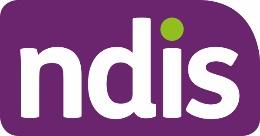
FOI 23/24-1405
OFFICIAL
Knowledge Article
For Internal Use Only
And, if you noted it’s
not a participant request, you have:
• checked if it’s an authorised representative request and looked at the
representative's authority, using articles
Consent to act on applicant behalf and
Check consent, nominee, child representative or self-representation authorities.
• completed a security check and identity confirmation if required, use arti
cle Consider
a request for personal information.
Add a new primary disability
There can only be
one reported condition identified as the primary disability.
To add a new primary disability, first you’ll need to change the current disability.
Do
not add an end date to expire the current recorded primary disability.
Change current disability
1.
From the
Person Account, select
Cases tab, then
New.
2.
Select
Update Person Account then
Next.
3.
Complete the relevant details and select
Save.
4.
Select the
Update Person Account tab and choose
who is making the request from
the drop-down.
5.
Select
Next.
6.
In
What would you like to update? select
Disabilities, then select
Next.
Note: This option is only available for users with the relevant permissions. For example,
the Planner Delegate skill permission.
7.
The
Disabilities screen will display the
Primary Disability.
8.
At
Primary Disability, select the drop-down arrow, then select
Edit. The
Disabilities
screen will appear.
9.
Deselect the
Primary Disability checkbox.
Note: Do
not add an
End Date to any disability, current or previous.
10. Select
Save.
V3.0 2024-03-25
Add a new primary disability 353962099
Page 2 of 5
This document is uncontrolled when printed
OFFICIAL
Page 5 of 12
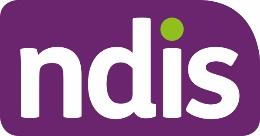
FOI 23/24-1405
OFFICIAL
Knowledge Article
For Internal Use Only
Add new disability
Do
not add a new current disability for an
early intervention participant. They
must have
their NDIS eligibility checked. Use arti
cle Understand eligibility reassessment referral
requirements.
1.
Select
New to display a new
Disabilities screen.
2.
Add the new primary disability, for:
• access delegates, use the
Select reported condition or
Select assessed
impairment fields
• planner delegates, use the
Select assessed Impairment field.
3.
Select the
Primary Disability checkbox.
4.
Only authorised delegates with relevant permissions can verify a disability. Authorised
delegates should select the
Is Verified checkbox, for example, access assessor or the
NPST Delegates.
5.
Enter today’s date at the
Start Date. Do not future date the primary disability.
Note: There can’t be multiple primary disabilities.
6.
Enter
Onset Date, if known. Do
not enter an
End Date.
Note: If the disability has an end-date, it will no longer show in the participant’s Person
Account. Even if this disability no longer relates to the participant, it forms part of their
account history.
7.
Select the
Evidence type from the drop-down list, then select
Save.
8.
Select
Next.
Add evidence documents
1. Select
Documents tab.
2. Upload required evidence using articles:
•
Add documents to a case
•
What evidence of disability is required?
V3.0 2024-03-25
Add a new primary disability 353962099
Page 3 of 5
This document is uncontrolled when printed
OFFICIAL
Page 6 of 12
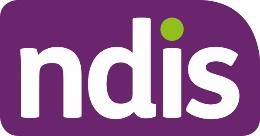
FOI 23/24-1405
OFFICIAL
Knowledge Article
For Internal Use Only
Record decision reason
1. You
must explain the
Person Account update.
Log an
internal communication activity
to explain the reason. Use arti
cle Log an activity or internal note.
Case review
1. Select
Update Person Account tab.
2. Review the details and select
Submit or select
Previous to make any changes.
Next steps
1. You
must log an activity, if you’ve had contact with a:
• person with disability
• participant
• their provider
• an authorised representative.
Use arti
cle Log an activity or internal note.
Article labels – internal use only
PACE user role names
Add:
Delete:
Topics
Add:
Delete:
Case names
Add:
Delete:
Ownership
V3.0 2024-03-25
Add a new primary disability 353962099
Page 4 of 5
This document is uncontrolled when printed
OFFICIAL
Page 7 of 12
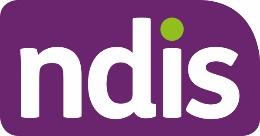
FOI 23/24-1405
OFFICIAL
Knowledge Article
For Internal Use Only
Add:
Delete:
Version control
Amended
Version
Brief Description of Change
Status
Date
by
1.0
EMN960
EL2 review – progress to QA and
APPROVED
2023-12-15
publishing
2.0
EMN960
EL2 review and approval to QA and
APPROVED
2024-02-20
publish
EL2 review and approval to QA and
3.0
EMN960
APPROVED
2024-03-25
publish
V3.0 2024-03-25
Add a new primary disability 353962099
Page 5 of 5
This document is uncontrolled when printed
OFFICIAL
Page 8 of 12
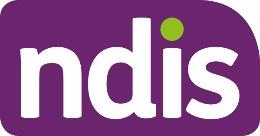
FOI 23/24-1405
DOCUMENT 3
OFFICIAL
Knowledge Article
For Internal Use Only
The contents of this document are OFFICIAL.
Request a participant disability change
Guidance in this document is not approved for use unless you view it in PACE.
This article provides guidance for all NDIA and partner staff to request a participant disability
change.
Recent updates
2 April 2024
Guidance update to eligibility reassessment referrals for early intervention participants.
Before you start
You have:
• received information to add or change the participant’s primary disability.
• checked if the participant joined the NDIS
under the early intervention
requirements. If
yes, then you
must refer them for an eligibility reassessment. Use
arti
cle Understand eligibility reassessment referral requirements. End of process.
Note: Do
not request a participant disability change for an early intervention participant.
• checked whether the request is from an authorised representative and looked at the
representative’s authority. Use either arti
cle Consent to act on applicant behalf or
Check consent, nominee, child representative or self-representation authorities.
• completed a security check and identity confirmation, if required, with article
Consider a request for personal information.
Request a participant disability change
Only delegates with the relevant permissions can change a participant’s recorded disability in
their
Person Account. Staff that are not authorised to action a participant disability change,
can request an update at any part of the participant’s journey.
Note: The National Planning Support Team manage these requests. However, delegates in
some specialist work groups may complete these updates.
V2.0 2024-03-25
Request a participant disability change 353962087
Page 1 of 4
This document is uncontrolled when printed
OFFICIAL
Page 9 of 12
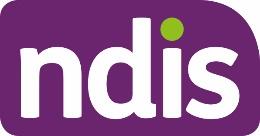
FOI 23/24-1405
OFFICIAL
Knowledge Article
For Internal Use Only
1.
Create an
Enquiry by following
steps 1- 6 in arti
cle Create an enquiry case.
2.
Under
Categorisation select the following:
•
Enquiry Type select
Planning & Monitoring
•
Category select
Reports and Evidence
•
Subcategory select
Updated.
3.
Select
Next.
4.
In the
Risk Matrix view, select
Yes to see a risk list and select all which apply.
Otherwise, select
No if there are no risks.
5.
Select
Next.
6.
Complete the
Enquiry note section using the following template:
• Current primary disability:
• Proposed primary disability (if applicable):
• Current secondary disability (if applicable)
• Proposed secondary disability (if applicable):
• Evidence of disability provided, and documents linked:
7. At Enquiry Outcome select Re-assign this enquiry to another user.
8.
At
Case Reassignment Reason, select
Referral National Delivery.
9.
At Select
User or Queue, select
Queue.
10. At
Case Owner, do a manual search and select
Re-Streaming Routing Queue.
11. Select
Next.
12. Review the details and select
Submit, or select
Previous to make any changes.
13. The
Enquiry case will open. Upload evidence in the
Documents tab of the case as
required.
• To check disability evidence, use arti
cles What evidence of disability is required?
and
Check treating professional details.
• Use article t
o Add documents to a case.
V2.0 2024-03-25
Request a participant disability change 353962087
Page 2 of 4
This document is uncontrolled when printed
OFFICIAL
Page 10 of 12
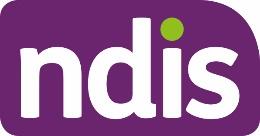
FOI 23/24-1405
OFFICIAL
Knowledge Article
For Internal Use Only
Next steps
1.
The case will progress to the next appropriate staff member for a decision.
2.
When this request progresses, the outcome is communicated via the enquiry case’s
activity log. It’ll re-assign to the creator. The creator is responsible for closing the case.
Use article
Manage an enquiry, in section
Action enquiries releated to an open case.
3.
The task function will ask for more information if needed.
Article labels – internal use only
PACE user role names
Add:
User role name label
Topics
Add:
Delete:
Case names
Add:
Delete:
Ownership
Add:
Delete:
Version control
Amended
Version
Brief Description of Change
Status
Date
by
1.0
EMN960
EL2 Review and approval
APPROVED
2023-12-15
V2.0 2024-03-25
Request a participant disability change 353962087
Page 3 of 4
This document is uncontrolled when printed
OFFICIAL
Page 11 of 12

FOI 23/24-1405
OFFICIAL
Knowledge Article
For Internal Use Only
EL2 Review and approval to QA and
2.0
EMN960
APPROVED
2024-03-25
Publish
V2.0 2024-03-25
Request a participant disability change 353962087
Page 4 of 4
This document is uncontrolled when printed
OFFICIAL
Page 12 of 12











